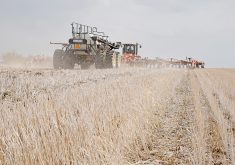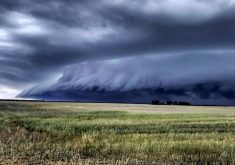Running a successful farming operation involves a non-stop dance with Mother Nature, trying to co-operate with her and achieve balance within the ecosystem.
Then there’s the financial side, where it can be difficult to increase profits while reducing expenses and taxes.
The federal government has announced increases in the lifetime capital gains exemption (LCGE) limit for sales of small business shares and farming and fishing property. At the time of writing this article, legislation had not been passed so the rules put into the Income Tax Act may vary from what has been announced so far.
Read Also

Invigor Gold variety viewed as threat to condiment mustard
Invigor Gold, the canola-quality mustard developed by BASF, is on a collision course with Canada’s condiment mustard industry. It’s difficult to see how the two can co-exist.
The income tax system provides an individual with a lifetime tax exemption for capital gains on the disposition of qualified small business corporation (QSBC) shares and qualified farm or fishing (QFFP) property.
Originally, the exemption was $1,016,836 for QSBC shares and $1 million for QFFP, but the budget proposes that, effective June 25, the limit will be increased to $1.25 million for both and it will continue to be indexed to inflation thereafter, resuming in 2026.
What does this mean for you? Potentially, this means a significant savings in tax.
For example, let’s say you sell QFFP and make a profit, otherwise known as a capital gain, of $1,500,000. Without the exemption, two thirds of that profit ($1,500,000 @ 66.67% = $1,000,000) would be taxable. However, with the increase to $1,250,000 and by using this exemption toward the potential capital gain, you can reduce the taxable portion of that gain ($1.5 million – $1.25 million @ 66.67% = $166,667.)
Instead of being taxed on $1 million, you would be taxed on $166,667. This is a tremendous amount of savings when selling any QFFP.
Keep in mind that the exemption has a cumulative lifetime limit and this total can be applied to other sales of capital property until you reach the maximum exemption of $1.25 million.
For example, if you make a profit or gain of $1 million and apply the exemption to reduce the taxable portion to nil, this will leave you with $250,000 ($1,250,000 – $1,000,000) to be used on additional capital gains you may have in the future.
This increase to the LCGE offers many positive and significant effects to your bottom line, providing financial security, increased capital for retirement or reinvestment into a farming operation.
Consider the following items when it comes to the exemption:
Succession in farming organizations is crucial and some farmers want to keep the business within the family. Be mindful of Bill C-208 when selling to a family member and using the exemption.
When selling property with the intention of accessing the exemption, it is important that what is being sold is a Qualified Farm or Fishing Property, per the CRA guidelines and regulations.
The lifetime capital gains exemption has a cap of $1.25 million, and this is cumulative, so be aware of what you are selling and what you are applying the exemption to because it can be used up.
While the exemption offers substantial benefits, it is important to get a clear understanding of the proposed changes established in the 2024 federal budget. Consult with a tax professional to ensure you get the most out of these benefits while remaining compliant with the CRA.
Colin Miller is a chartered accountant and partner with KPMG’s tax practice in Lethbridge. Contact: colinmiller@kpmg.ca.















